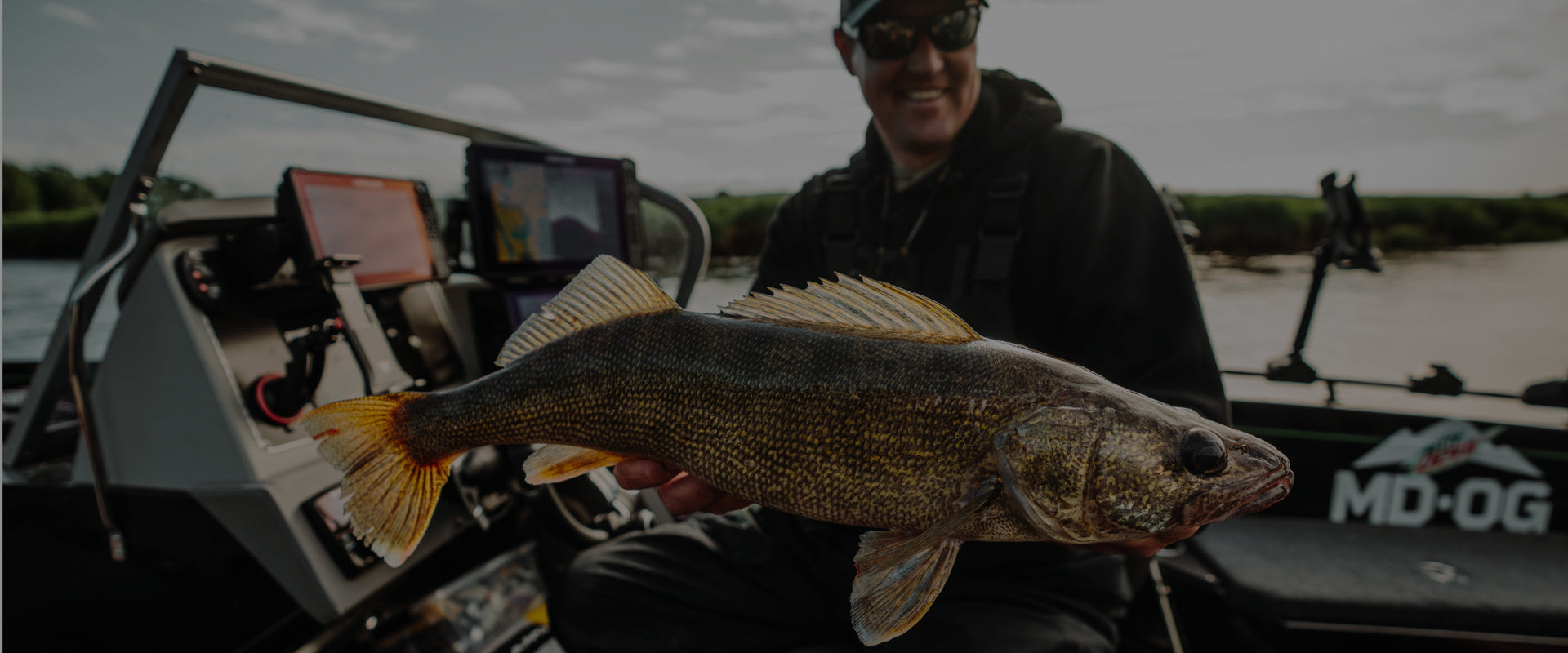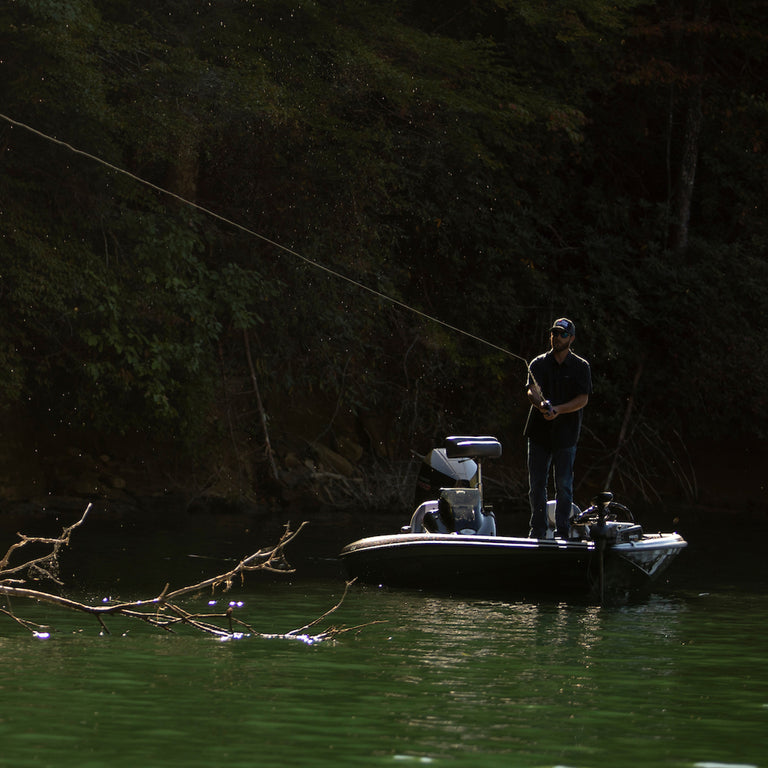
Get pro tips for catching walleye in rivers—find out which gear, bait, and techniques will give you the best chance...
Read More >
Deciding on what line to purchase for your specific fishing needs just got a whole lot easier! In this article, we will review the composition, pros and cons, and scenarios for utilizing braid fishing line – relied on and trusted by angers who need to fill that blank space on their wall at home.
Already know what information you're looking for? Use our quick links to get you just where you need to go in this line guide so you can get back on the water faster.
Unlike monofilament and fluorocarbon that are single-strand lines, braided fishing line is made from multiple strands of synthetic fibers, like Dyneema, that are woven together to create an extremely strong and durable line. Even with its fused strand composition, braid is still smaller in diameter than the other lines while maintaining an impressive break strength.
Braided line does not stretch like fluorocarbon, making it extremely sensitive to the smallest bites and comes in a variety of colors that can meet your individual visibility needs and fishing environments. Overall, braid is for anglers that require strength, sensitivity, and castability for targeting large species.
Braid is a top choice for those seeking out next-level strength, but understanding all the applications for this line is just as crucial for a successful day on the water:
While the applications and variations of Berkley braided line expand beyond what is listed in the chart below, this will give you an overview of the high-level types of line and most general guidelines for each to point you in the right initial direction:
Powered by Berkley Labs
Berkley Forward Braid isn’t just another braided line – it's breakthrough line technology. This line gives anglers the ability to put their bait exactly where they want it to generate strikes – especially for finesse fishing techniques. Both purpose-built and optimized for forward-facing sonar, Forward delivers longer and more precise casts, higher sensitivity, an optimal sink rate and completely changes the game for anglers looking to level up their performance.
Forward Braid solves a number of issues that accompany traditional braid with its longitudinally twisted composition and thermally-fused construction.
READ FORWARD DEEP DIVE
Braid is probably the line with the fewest knot tying options since due to its stiffness but there are still several that work well:
Braid has several advantages and specific properties that have resulted in its popularity among anglers ready for a fight:
While there are many benefits to using braid, it is important to recognize the minor drawbacks to understand if this is truly the line for you:
While braided line may not be an all-purposes line used for your everyday fishing situations, it is extremely high performing when you need to land a large and powerful fish.Not sure our Braid is right for your next fishing adventure? Learn more about our other line type options to see if there is a better fit: